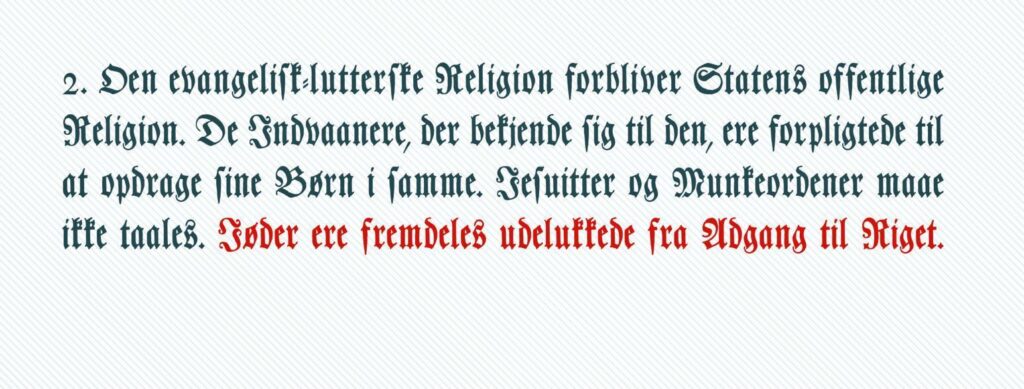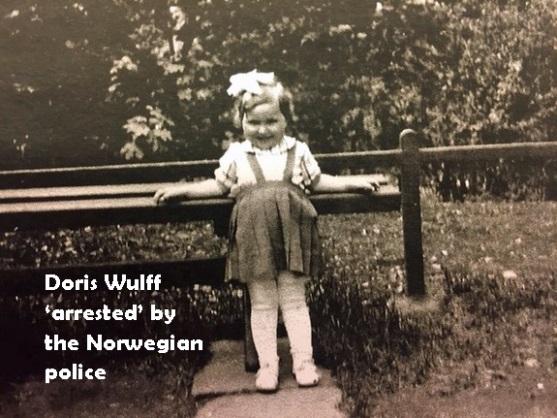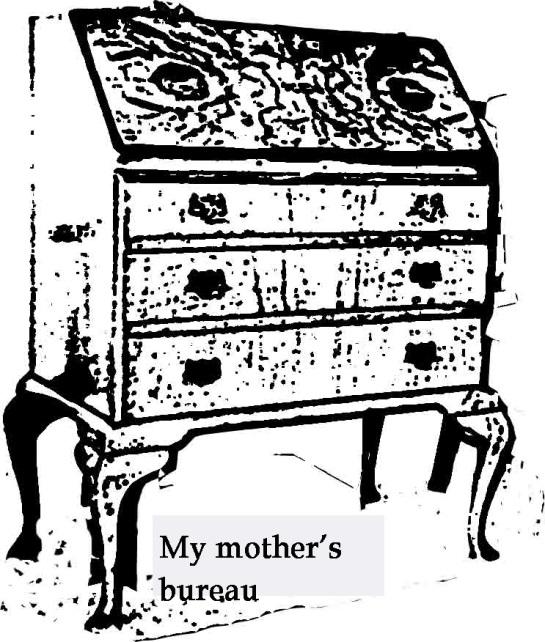As discussed earlier, nations may wage war against other nations, but they also utilize ‘war-like’ aggression to commit acts of violence against their ‘own people’. This post describes how such strategy has been observed beginning with the Norwegian government back in 1942.
Napoleonic History
Without claiming to be an expert on Napoleonic history, it was perhaps unfortunate that Napoleon failed in his democratic attempt to defeat the Russian Empire (1812).47 Of course, the reactionary British assisted the Russians. There are also ironies in this. The Danish ’empire,’ which was allied with the French, was divided in order to weaken its power.
The British decided to ‘give’ Norway, a Danish colony, to their ally, the Swedes. Ironically, this resulted in the semi-democratization of Norway, despite the fact that the reactionary British and Russians were in opposition to such democratic processes.
One can’t but help referring to systemic causes here. Historians love to say, ‘B’ happened because of ‘A’, despite the fact they often have little knowledge of logic or causality. Without trying to establish a comprehensive definition of systemics, one can explain it simply by saying that it relates to entire systems; cause and effect is dependent on the interaction of a multitude of factors.
Systemics is based on the works of Mario Bunge.48 Systemic thinking emphasizes circular causal processes, also called interactive causal processes. To explain this in layman’s terms, WWII did not result in the victory of Britain; but it resulted to the emergence of Germany and Japan, and the resurgence of the USSR; it also resulted to the world domination of the United States, replacing Britain as the world’s superpower. In this process, Britain were relegated to the second division despite having ‘won the war’. In other words, this represented the ‘systemic consequences’, unrelated to the linear causal explanations; one example is how Germany started the war and were defeated by the victors Britain.
‘The Jew Clause’ in the Norwegian Constitution of 1814
We are in a muddled-up world of concepts and terms here. The new Norwegian constitution of 1814 may have seemed ‘democratic’ at the time. It did, however, include a paragraph that foreshadowed the mass extermination of a religious minority 150 years later.
‘The Jew clause’ (Norwegian: Jødeparagrafen) is the vernacular name of the second paragraph of the Constitution of Norway from 1814 to 1851. The clause, in its original form, “banned Jews from entering Norway, and also forbade Jesuits and monastic orders.”49

This may be viewed as a systemic prelude to the mass extermination of the Jews in Europe 150 years later. The Norwegian government also played a ‘minor’ role in this Aryan endeavour; it was then led by the Nazi Vidkunn Quisling, the Prime Minister of Norway (1942-1945).
In comparison to other European countries, the extermination of Norwegian Jews was obviously on a small scale. Nevertheless, as I live in Oslo, the capital of Norway, I am reminded every day of the Norwegian government’s measures; of how they, assisted by the Norwegian Police, sent the Norwegian Jews to their deaths in Nazi concentration camps. This is perhaps ‘general knowledge’ now; nevertheless, I would like to point out that this deportation included both the old and the young.
East Oslo
I live in Grünerløkka, East Oslo, which was traditionally a working class district. The factories of the First Industrial Revolution were initially water-powered and used the steeply flowing Akers River, which ‘conveniently’ divides East Oslo from West. At least historically, West Oslo was populated by the middle class, while East Oslo was populated by the working class. Prior to the German invasion of Norway, East Oslo had a sizable Jewish population. This is evidenced by the Jewish graveyard, which still exists today, located between the Sofienberg Church and Helgesens Street in East Central Oslo.
Back in the old days, Grünerløkka was called ‘New York’ due to its overpopulation and bustling industrial activities in the late 19th and early 20th centuries. The Grünerløkka city district has a convenient location. It is only a 25-minute walk to the town centre, and a 40-minute northward jogging run on the Akers River footpath that leads directly to the large forests that surround Oslo. Here, there are no interruptions by vehicle traffic.
Memorial Cobblestones

In other words, I often walk to the town centre to have a coffee and a sandwich at the central station and to write this book, amongst other things. This journey involves stepping on many so-called memorial cobblestones.50 These are World War II memorials embedded in the sidewalks of places where Jews and other victims lived. Tragically, these lives ended through the hands of the Norwegian government and police who deported them to be killed by the German Nazis in concentration camps.
Each stone represents a single person and includes a brass plate engraved with their name, birth year, deportation year, and date and place of death. In Oslo, there are 393 such stones as of September 2020.51 I sometimes stop to read these brass cobblestones. What surprises me is that the Norwegian police ‘arrested’ small children as well as the elderly and infirm.
The Arrest and Execution of 4-year old Doris Wulff

One such young child is Doris Wulff. She was only four years old when she was ‘arrested’ by the Norwegian police. The Norwegian police were too cowardly to kill her on the spot; they preferred to torture the child first by deporting her to the more cynical German Nazi SS, who had no qualms about killing young children. The ‘torture’ would involve a long and exhausting journey to Auschwitz in Oświęcim, Poland. This was followed by a stay in the concentration camp awaiting execution.
Of course, the Norwegian police who sent the young and old to their deaths didn’t do so because they were ‘evil’ and delighted in such acts. They, like their German cousins, were driven by something far more mundane: theft.
Let me paint you a picture. Once the Norwegian police had done their ‘patriotic’ duty and have evicted the Jews from their urban apartments, they were often ‘rewarded’ for such an ‘act of bravery’ by being ‘given’ the said apartments by the authorities. In that confiscated apartment, they could comfortably settle down with their own families; while nurturing their own children, they conveniently forgot about the family they had sent to their deaths.
Basically, the Norwegian government and police appropriated (read: stole) Jewish property. But this was just something they had picked up from their German Aryan brothers.
Appropriation of Jewish Property
This confiscation of property is something I read about in a Norwegian magazine called “Vi Menn” (‘We men’), but I don’t recall the date of publication. However, it is not as if there is not enough evidence available that state aggression was motivated not only by ‘hate’, but by the more mundane idea of ‘theft’. In other words, it is generally accepted among people that they can oppose other soccer teams, ideologies, nations, races, and so on. But vulgar theft of property for avaricious gain is looked down upon by most religions and ideologies.
This appropriation of Jewish property in Norway during the Second World War has been described by the Norwegian historian Synne Corell in her book “Likvidasjon” (‘Liquidation’). She reports that “there were 8 million Norwegian kroner on the liquidation board’s account at the end of the war. In present-day value that is 180 million kroner (18.5 million Euros). It was taken from 2,200 Norwegian Jews.”52
In retrospect, from a common sense point of view, this figure must be way too low. Just the confiscation of private property in modern day terms must have amounted to ten times that amount (400 apartments), not taking into account the many other assets.
Sources
47 The 1812 Overture was written in 1880 by Russian composer Pyotr Ilyich Tchaikovsky to commemorate the successful Russian defence against Napoleon I’s invading Grande Armée in 1812. https://www.youtube.com/watch?v=AuSiQcCkALI
48 https://en.wikipedia.org/wiki/Mario_Bunge
50 Translation of the illustrated brass cobblestone: Norwegian: “Her bodde Doris Wulff. Fødselsår 1938. Deportert 1942. Auschwitz. Drept 1.12 1942”. English: Doris Wulff lived here. Year of birth 1938. Deported 1942. Auschwitz. Killed 1.12.1942.
51 https://www.visitoslo.com/en/product/?tlp=3818403&name=Stolpersteine-memorial-cobblestones
52 https://cne.news/article/192-norwegian-historian-claims-that-holocaust-was-planned-much-longer-before Read: 28 April 2023.




One Reply to “Norwegian War against their Own”